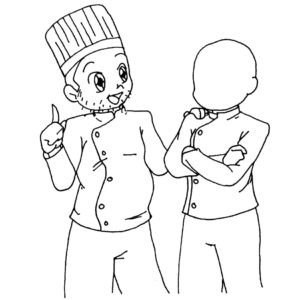Techniques to Stop Burning Your Food
Watch Out For These Two Flavor Fighters!
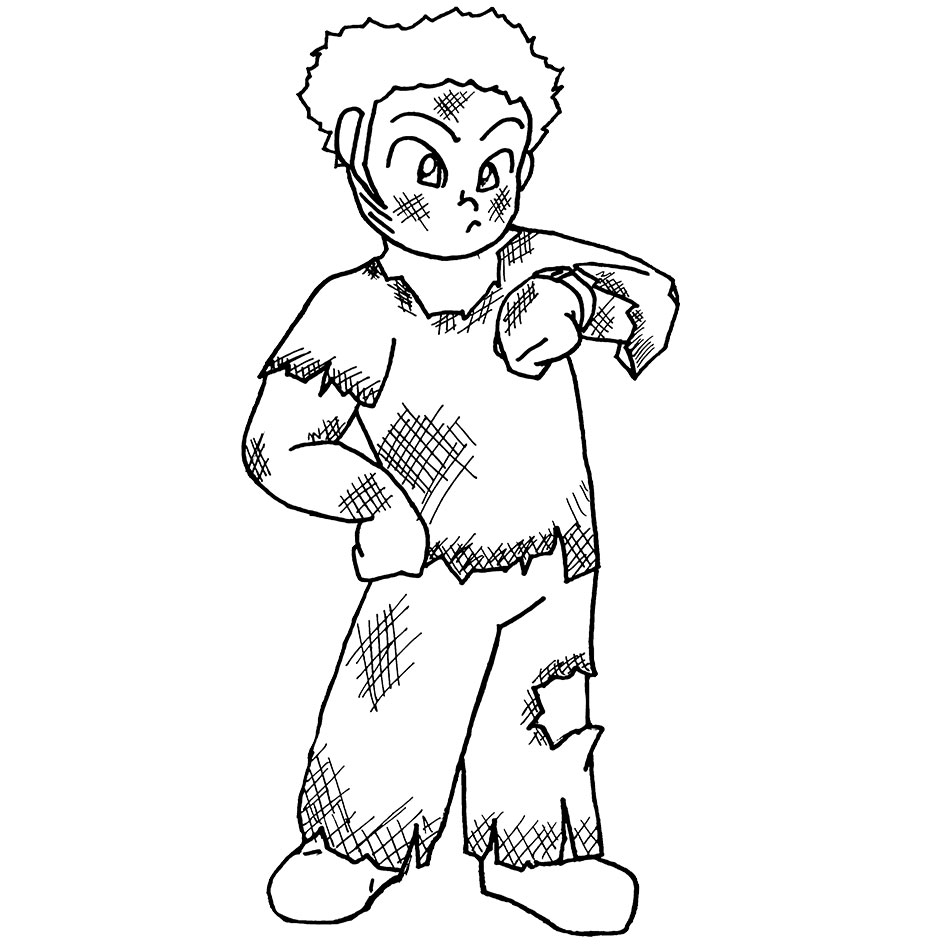
Meet Burnt Burt!
Burnt Burt is always burning all of his dishes, because he is so impatient! Because he is so impatient, he is always using super high heat when cooking all of his dishes. Th is causes him to burn everything! Don’t be like Burnt Burt. Always use a medium or lower heat setting when you are learning to cook. Burning food is the opposite of good flavor! Burned foods are overly bitter and have to be thrown away.
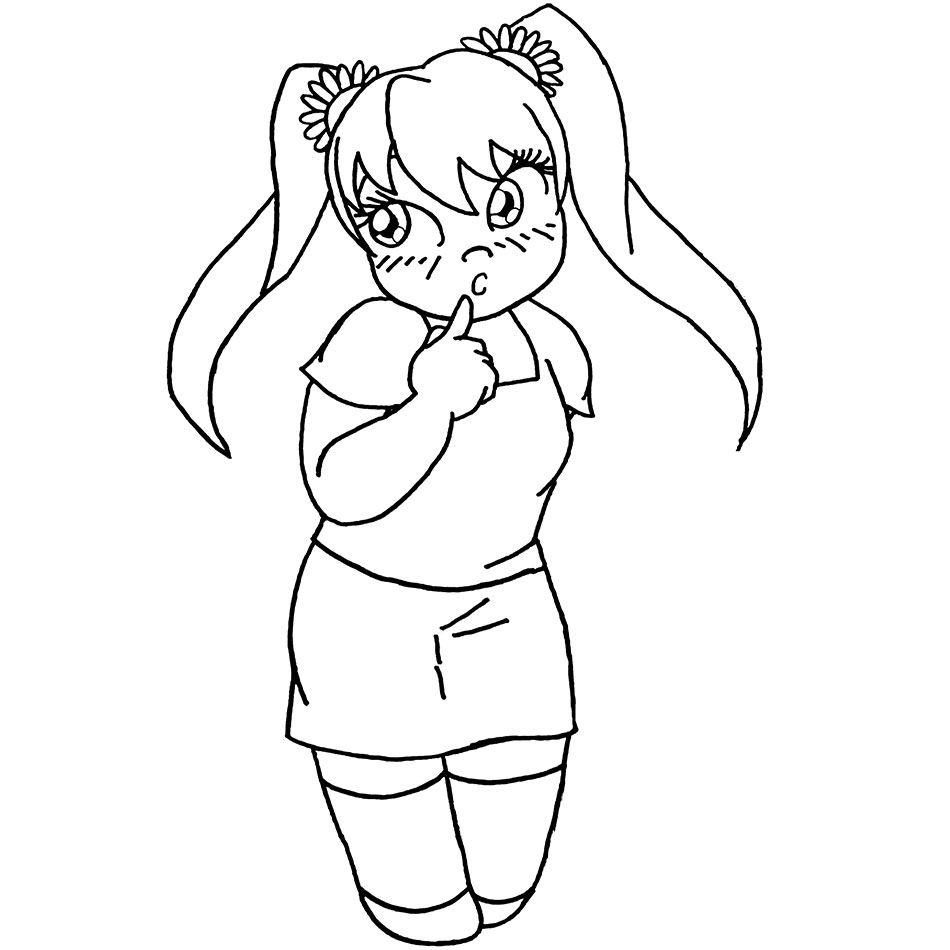
Meet Distracted Daisy!
Distracted Daisy is also a classic burner! She is always on her cell phone, or watching TV when she should be watching her food cook. As a result she always makes huge messes, burns her food, and causes kitchen accidents. She is constantly causing general mayhem. Distracted Daisy is like a tornado in the kitchen! She’s just plain dangerous! Don’t be like Distracted Daisy. Always watch your food cooking so that you can catch any mistakes before they happen! Stay focused on your cooking so you can consistently create flavorful dishes, avoid ruining your food, and so you can impress all your friends and loved ones!
Heat Sources
We are so close to beginning to cook! But before you get your hands on that hot stove, I need to teach you the most important idea to keep in your head when you cook. That idea is to understand how NOT to burn your food. But first, we must understand the purpose of heat in our cooking. What is the role of heat inside of cooking?
When you are cooking your food, what you are doing is creating chemical changes inside of whatever you are cooking. These chemical changes can only occur with the presence of heat. When you bake bread, the heat causes chemical reactions that create an end product that is completely different than what you begin with. Bread dough and baked bread contain the same raw ingredients, but not the same chemical or molecular properties. As a result, they are completely different. These chemical changes are what turn raw ingredients into digestible nutrients. It is only with the introduction of heat that these chemical changes are even possible. Heat is necessary in almost all forms of cooking. You can make many great dishes with only raw ingredients, but by adding heat we can quickly transform our food into infinite and amazing combinations.
Remember, it is not the quantity of heat that causes the chemical reactions but the actual presence of heat that causes the chemical changes.
To explore this idea further, let’s take two different but similar cooking methods and explore what they are, how they deliver heat, and what kind of end product they create. Let’s use the barbecue and grilling techniques for our comparison. Very often these two cooking techniques are confused
because they use the same piece of equipment. This piece of equipment is of course your grill or BBQ pit. But in actual practice, these are two completely different cooking techniques. Let’s explore these techniques in detail.

1 BBQ
BBQ is a slow and low cooking method that is characterized by low heat and an indirect heat source. Often aromatic smoking woods like hickory, apple, and mesquite are utilized in the creation of a BBQ dish. But, what creates the tender pull apart texture of BBQ is actually the slow and low
cooking process. Temperatures are usually under 235 degrees Fahrenheit. This slow cooking process allows the natural enzymes in the meat to become tender naturally over time.
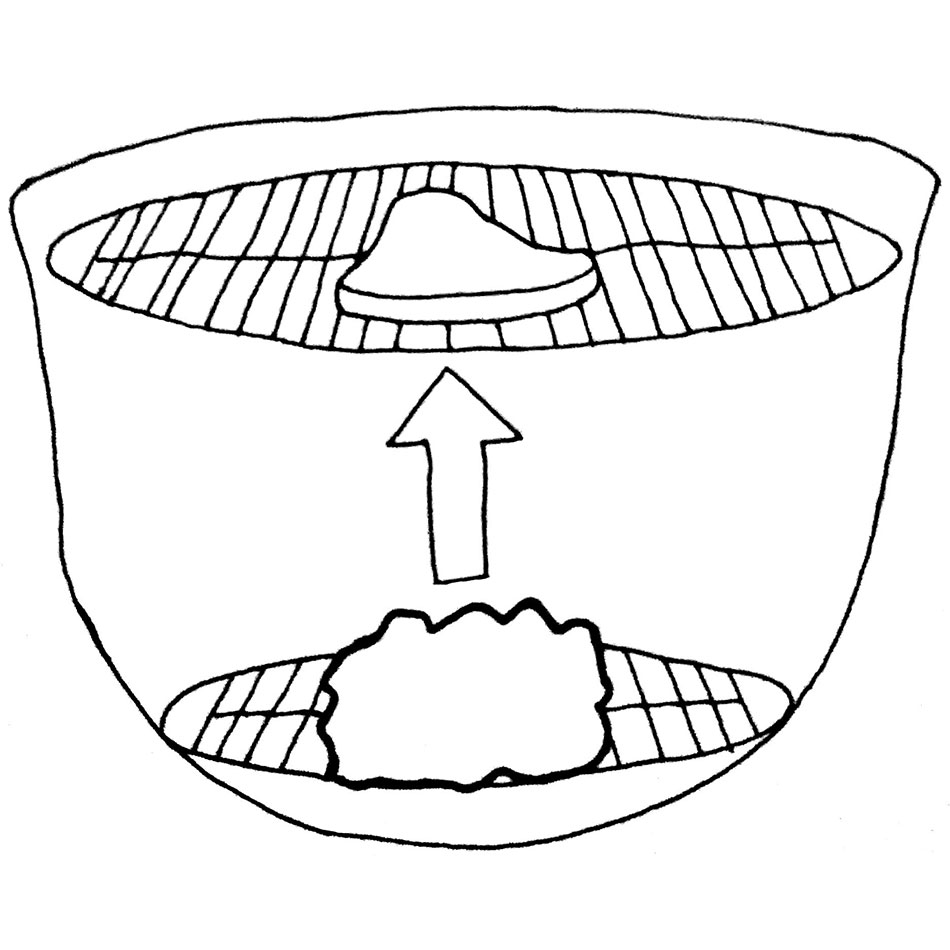
2 Grilling
Grilling is characterized by a high heat cooking temperature with a direct heat source. What makes grilling different from BBQ is that the temperature is usually over 350 degrees Fahrenheit and the meat is exposed to a direct cooking element. Th is cooking element could be gas, an electric burner, infrared heat, or charcoal. By exposing the meat directly to the heat source, it cooks the product faster and allows for a reaction, called the Maillard reaction, to occur on the surface of the meat. This can only occur when temperatures of the meat are above 350 degrees Fahrenheit. When cooking at these high temperatures though, you run the risk of over cooking your food, which will make it tough.
We have two techniques that ultimately perform the same task. Th is task is to sufficiently cook our proteins so that they are edible and digestible, but the difference in the application of the heat creates two completely different, yet similar, dishes in the end.
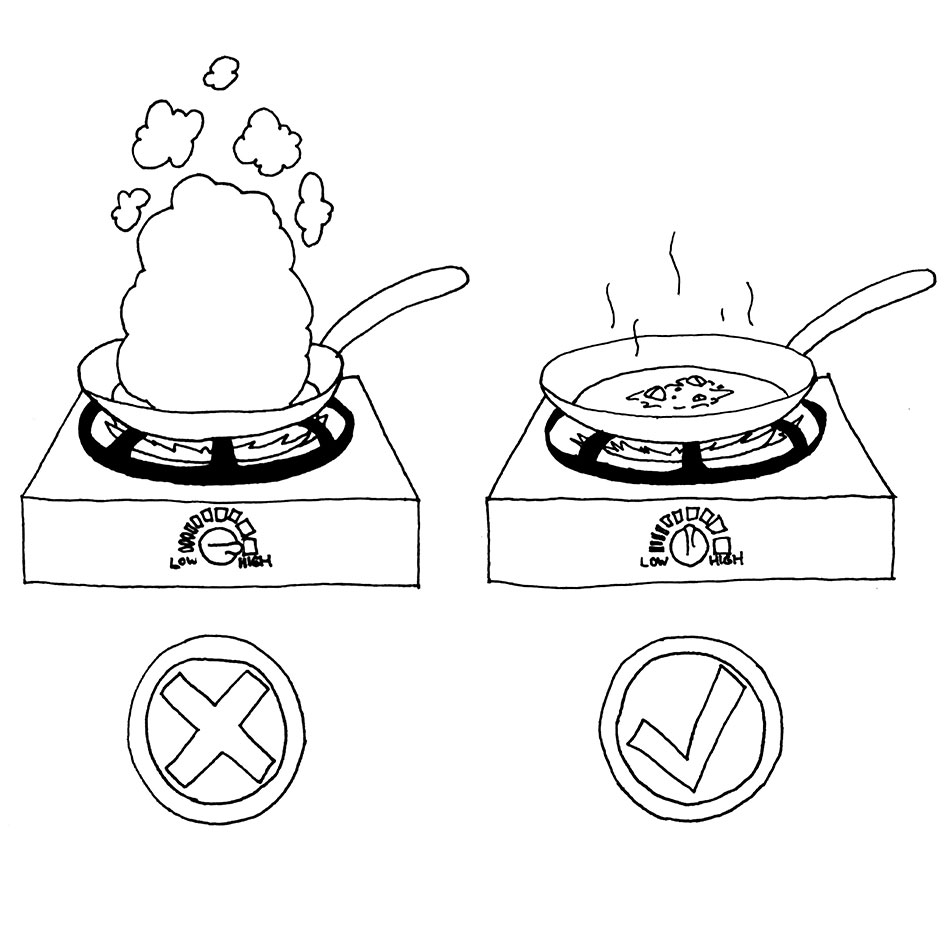
How to Avoid Burning - How Low Can I Go? - Do Cooking Temperatures Matter?
Unless there is a specific amount of browning required in a recipe, it does not truly matter what temperature you cook something at, as long as it is above 180 degrees Fahrenheit. So I suggest you start your cooking temperatures lower than the recipe calls for at first.
Even though most sauté recipes will call for a medium heat, you can still fully cook a recipe on the lowest possible setting. Th e process will take a much longer amount of time and you will not get any browning, but you will end up with a fully edible dish in the end. Th is idea has many mitigating factors to consider. Just remember this: starting low and slow is the best course of action. Once a dish is burned, it can not be unburned. You need to give yourself room to make mistakes and errors.
Low and Slow Takes Longer, But Leaves Room for Error
Because this is a beginners article, we are going to keep these ideas simple and fairly cut and dry. Let’s use the example of sautéing minced garlic in a sauté pan. Inside of the sauté pan, we have 2 tablespoons of canola oil and 4 tablespoons of minced garlic. If we place the sauté pan over a high heat and continue stirring it, we will have a lightly browned garlic in roughly 5 minutes. If we put this same sauté pan over a medium heat, it will be done in about 10 minutes. If we place the sauté pan over a medium-low heat, it will be finished in roughly 15 minutes.
I don’t know about you, but my natural response is to pick the 5 minute cooking time because I don’t like to wait. I want to get this process over with. In this instance, this is absolutely the wrong solution. When cooking, you don’t want to think about what can go right, but about everything that could go wrong. If we are cooking garlic over high heat, we only have a 5 minute window to get the garlic correct. If my phone rings and I look away for 30 seconds, now I have black, bitter, burned garlic and have to start completely over. But if I choose a lower temperature, I can have a greater margin for error and perform other tasks, like cutting other ingredients, and still end up with the desired result.
Always choose the lower cooking temperature. This may take longer, but the most important thing when learning how to cook is building your confidence. The garlic will get cooked either way. But if you loose confidence in your abilities to cook, you may quit and never find the pleasure that comes from cooking your own meals.
Pan Choice Counts
As we had discussed in the previous chapter, the thickness and material construction of a pan can influence heat transfer. In layman’s terms, thin aluminum pans burn food. This is especially true if you are a beginner cook and are using a high heat. As I had discussed previously, thicker pans provide even heat distribution, which helps prevent scorching and burning.
One place you will really be concerned about this (and trust me I speak from experience) is in the construction of delicious marinara sauces. In my household, to say that we eat marinara regularly is an understatement. I can not tolerate the taste of canned or jar sauce, so I must simply create it myself.
Once, I was cooking marinara and the bottom of the pot was thinner than I had realized. I turned the burner down to a medium-low heat and walked away for a few moments. When I came back, I noticed that my marinara smelled funny. So I gave it a good stir and black bits came up from the bottom of the pan. I tasted the sauce and it was completely ruined. Two gallons of marinara down the drain.
Learn from my mistakes. Use heavy thick bottomed pots and pans, especially as a beginner cook.
Proper Safe Cooked Temperatures for Foods
This is extremely important information. All though it may seem like a big disclaimer, you need to know this because under cooked foods, especially chicken, can be very dangerous if eaten under cooked. In restaurants, we are often required to complete HAACP forms where we actually take the temperature of food as it leaves the kitchen to indemnify ourselves from any wrong doing in case of a food poisoning outbreak.
Humans are not adapted to eat raw meats. Meat eating is fairly new for our species. We lack many of the defense systems that carnivorous animals, like dogs, possess to keep them from getting sick while eating raw meats. The only exception to cooking food to a well done temperature is with steak, pork chops, and pork steaks. These can be cooked to a lesser degree at your own discretion. Please do not ever serve hamburgers at any temperature lower than well done, as the dangerous bacteria gets mixed through out the hamburger patty. Sushi is the other exception to this rule. As long as it is handled properly and safely, sushi is generally acceptable to eat.
Foods Are Fully Cooked When They Reach These Internal Temperatures
Meat Item Cook To This Internal Temperature
chicken, turkey, and poultry 165°F
beef, pork, veal, and lamb 155°F
fish, shrimp, other seafood, leftovers, and veggies 145°F
Cooking your food over these internal temperatures can cause burning and excessive dryness. So think of these temperatures as a bulls-eye target to hit. You have to hit the minimum temperature. Over by 5 or 10 degrees is okay, but under by even 1 degree is not okay.
The temperatures listed in the above chart are the prescribed temperatures as recommended by the USDA. These temperatures are almost always in constant flux. So double check with the USDA website to make sure that these are still the current correct well-done temperatures.
You need to hold these temperatures for at least 30 seconds to make sure everything is nice and safe to eat. You can find the internal food temperature with a handy-dandy kitchen thermometer. If you don’t have one, I highly recommend that you purchase one.
Quick Tips to Avoid Burning Your Food
1 Don’t get impatient. (like Burnt Burt)
2 Don’t get distracted. (like Distracted Daisy)
3 Understand your heat source.
4 Cook low and slow.
5 Use thick bottomed pots and pans.
6 Cook only until well-done, no more.
Learn HOW to cook in a new, fun, and exciting way! Click here for Chef Ryan's How to Cook Cookbook
